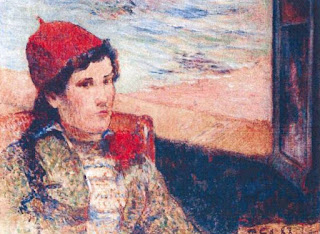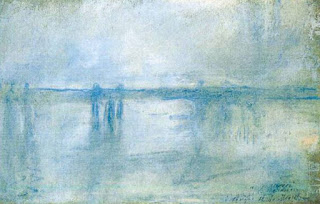 |
Haida artist Bill Reid's art safely back on display
at UBC's Museum of Anthropology (Photo Sezgin) |
by Catherine Sezgin, ARCA Blog Editor-in-chief
Newly released RCMP and university campus security records obtained by Postmedia News through federal and provincial access-to-information laws, plus court documents, offer a fuller picture of the mysterious theft and its bizarre fallout.
At about 4:40 a.m. on May 24, 2008, thieves removed "a glass panel" from the back of the museum, "unleashed a cloud of bear spray, presumably to repel any guards who might try to intervene" and smashed a glass showcase to steal $2 million of jewelry designed by Haida artist Bill Reid (Quan, quoting campus security report). The heist was estimated to have taken less than 3 minutes (compared to the more than 2-minute
Kunsthal Rotterdam heist on October 16). According to Quan's review of the report, "security cameras stopped recording before the break-in". UBC's Museum of Anthropology has since been renovated and expanded.
Quan points out that in 2008 the security guard at the Museum of Anthropology had been widely reported to be on a smoking break at the time of the robbery:
Contrary to media reports that suggested he had been on a smoke break and apparently oblivious to trouble, the guard alerted dispatch when the alarms started wailing, the former security officer said.
Protocol at the time dictated that the guard stay put and that dispatch send another officer to walk through the museum. But the walk-through never happened, the former security officer said.
An alarm falsely attributed to "invalid"and a "false sense of security" (Quan) were problematic.
According to Quan, the investigation, led by the RCMP major crimes section, involved an anonymous tip within days of the theft; police surveillance of the suspect; background checks on construction workers involved in the renovation of the museum, a fired security guard, and "disgruntled" artists who had worked with Reid. A search of a home connected to a man with "at least 11 convictions for property crimes" led to the recovery of "all but two of the stolen items" on June 8 (just a little more than two weeks after the theft). By August the other items were recovered: "The last piece, the argillite pipe, was dropped off anonymously. (Quan)"
Then in January 2009, CBC
reported the RCMP had paid $20,000 to a criminal informant for "help with the investigation." According to Quan, the RCMP "would not say this week who received the money or how much was paid" and the case is "unresolved" and that "two years after charges were recommended in the museum heist, Crown counsel notified RCMP there wasn't enough evidence to lay charges."
 art theft,Pretoria Art Museum,South Africa
art theft,Pretoria Art Museum,South Africa
 No comments
No comments
 art theft,Pretoria Art Museum,South Africa
art theft,Pretoria Art Museum,South Africa
 No comments
No comments








.jpg)












